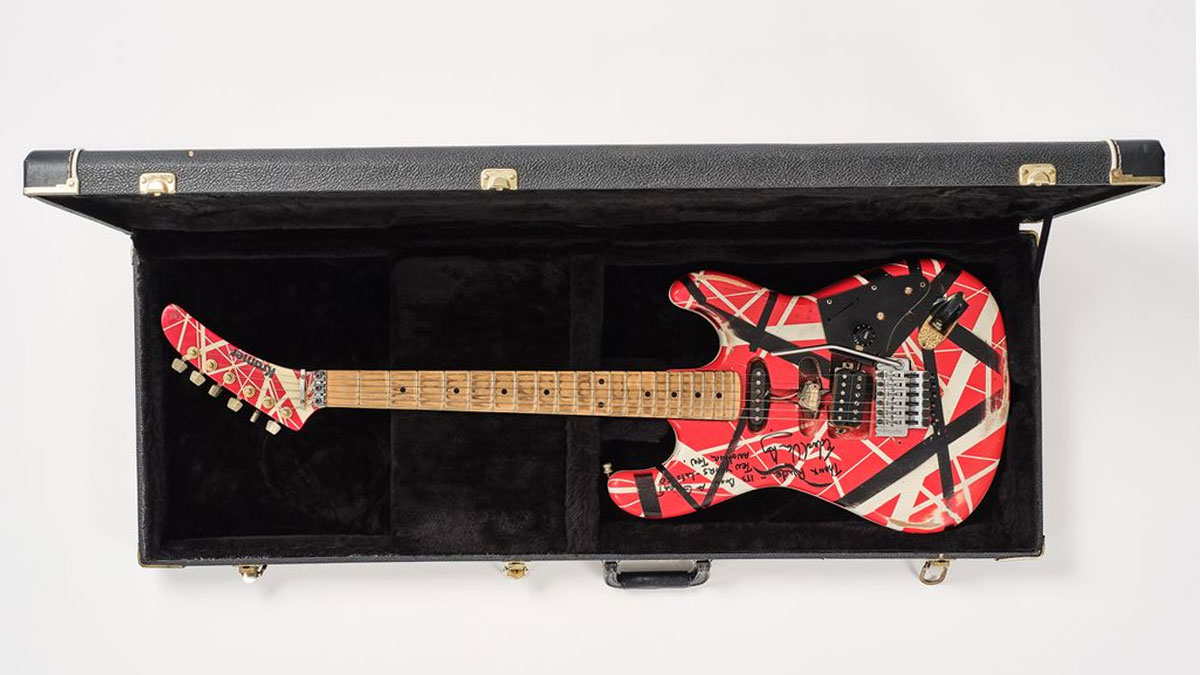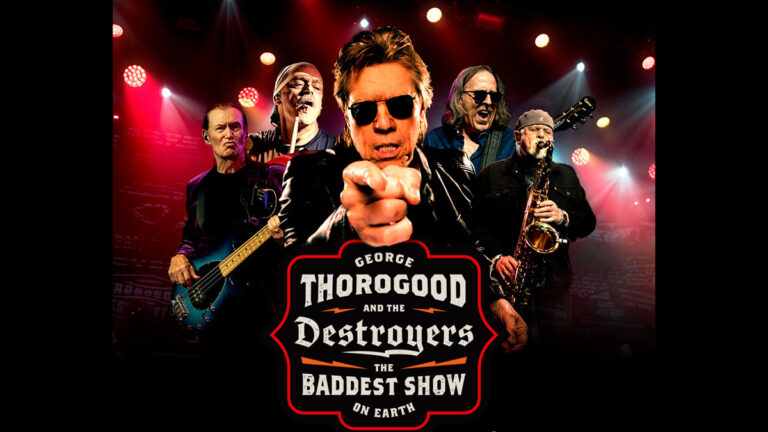The guitar is estimated to fetch $2-3 million
This October, one of rock history’s most iconic instruments – an electric guitar custom-built and played by the legendary Eddie Van Halen – will headline Sotheby’s inaugural Grails Week in New York, offering collectors a rare chance to own a piece of music royalty.
Photomatched to multiple performances and tours, the 1982 Kramer guitar, based on Van Halen’s original “Frankenstein” design, was extensively played by Eddie during his 1982-1983 tours, including concerts in Philadelphia, Caracas, Venezuela, Sao Paulo, Brazil, and Buenos Aires, Argentina. Between 1985 and 1986, the instrument was gifted to his longtime friend and guitar technician, Robin “Rudy” Leiren, who later sold it to Mick Mars, former lead guitarist and co-founder of heavy metal band Mötley Crüe. Mars notably used the guitar during the recording of the hit Dr. Feelgood album, including the track “Slice of Your Pie,” and other sessions.
Marking the first time the guitar has appeared on public view in over 40 years since Eddie last played it in concert, the guitar, which is estimated to fetch between $2-3 million, will be on display in Monterey, California from August 13-16 to coincide with RM Sotheby’s flagship Monterey auctions, before headlining Sotheby’s Rock & Pop auction on October 24th during Grails Week, running from October 21-28.
Additional highlights from the sale include Bob Dylan’s original working lyrics for Subterranean Homesick Blues (est. $400,000–600,000), the Rolling Stones’ It’s Only Rock ’n Roll original album cover artwork (est. $100,000–150,000), and a Beatles cymbal used in key 1962–63 performances and recordings, including “Please Please Me” (est. $100,000–150,000).
Widely regarded as one of the greatest guitarists in rock history, Eddie Van Halen played many custom-built and heavily modified guitars, especially early in his career. Spray painted with Van Halen’s characteristic black and white abstract stripes on a red base, the design of this guitar traces back to the original “Frankenstein,” built by Eddie in 1975. Unlike modified models, the “Frankenstein” was assembled from various parts, blending Fender characteristics with Gibson-like electronics. This expanded the vision of what an electric guitar could be, allowing Eddie to shape his trademark “brown sound” and refine his fluid two-handed playing style that would define a generation of guitarists. The guitar shows extensive wear from playing, and the body features an inscription from Eddie Van Halen to Rudy Leiren.
An endless tinkerer and vintage car enthusiast, Eddie continually modified his instruments to suit his needs. He experimented with everything from neck lengths, nut widths, fret heights to body sculpting and design, each tailored to improve performance and suit his playing style. Accompanying photographs show Van Halen himself working on this guitar at the Kramer factory in Neptune, New Jersey, using an electric drill to make adjustments. A chance encounter between Kramer’s Dennis Berardi and the manager of Van Halen on an airplane flight set the foundation for Kramer’s meteoric rise in the 1980s and a decade-long partnership with the guitarist. This particular guitar is also featured in a famous Kramer advertisement, further cementing its place in rock history.
His design choices were likely influenced by several factors: the punk rock scene emerging in mid-1970s Los Angeles, the hot rod culture of his Pasadena upbringing, and his early childhood exposure in Holland to the De Stijl art movement, spearheaded by painters Theo van Doesburg and Piet Mondrian. Founded in 1917, this Dutch art movement emphasized pure abstraction through vertical and horizontal lines and a palette limited to black, white, and primary colors. The guitar’s sharp red, black, and white lines strongly resemble the De Stijl style.
This DIY approach to guitar customization would become a hallmark of Van Halen’s style, and it was one of the factors that set him apart from other guitarists of his generation. By taking a hands-on approach to his instrument, Van Halen was able to create a sound and a look that were entirely his own that would ultimately help redefine the hard rock genre.
Reflecting the surging demand for pop culture collectibles, Sotheby’s Grails Week is a biannual, multi-auction event held each April and October, showcasing extraordinary items from the worlds of film, music, television, and comics. The inaugural edition this October will coincide with New York Comic Con, where Sotheby’s will take its place at the heart of the ultimate celebration of collectibles and fan culture.
Sotheby’s has previously auctioned guitars that have fetched big bucks, including Eddie’s “Hot for Teacher” at $3.9 million in 2003, Eric Clapton’s “Blackie” Fender Strat for $959k in 2004, and Kurt Cobain’s “Smells Like Teen Spirit” Fender Mustang and “Unplugged” Martin D-18E, fetching $4.5 million and $6 million, respectively.





